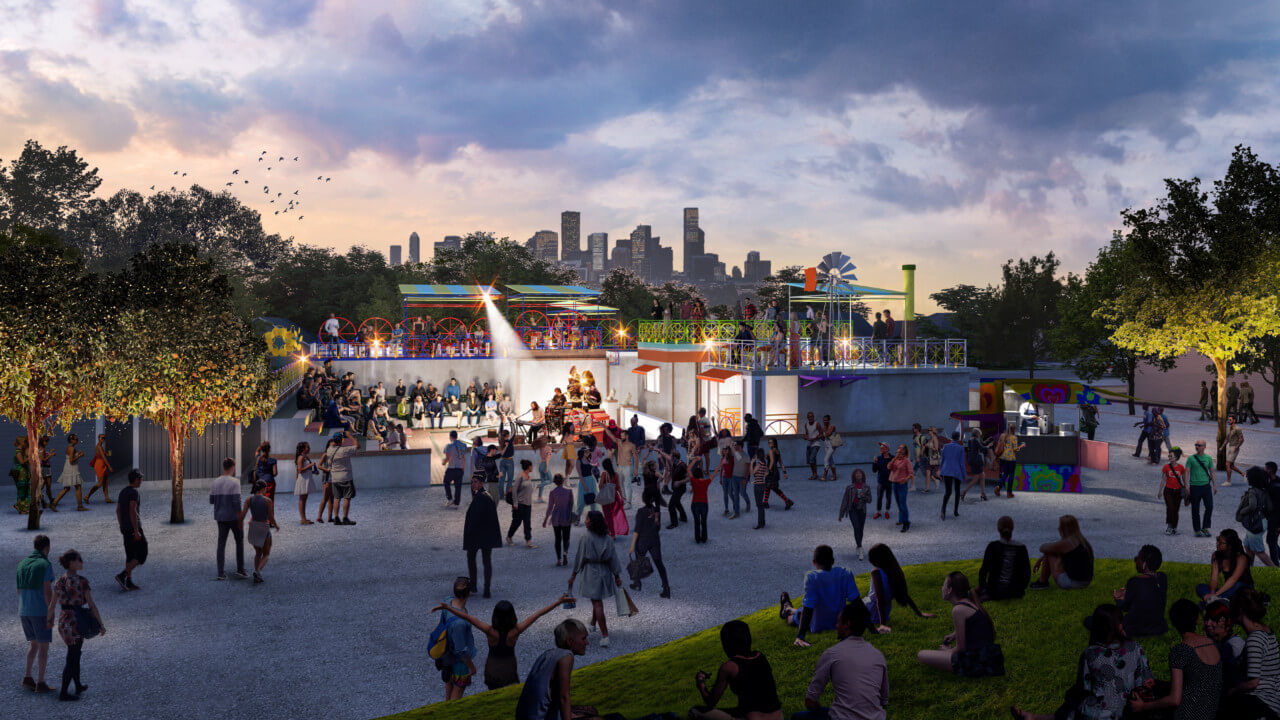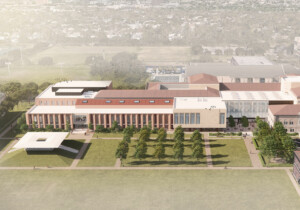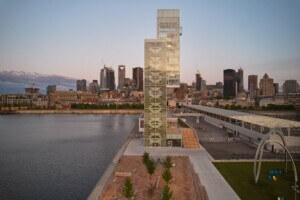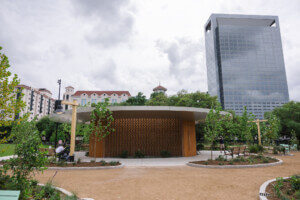In Houston, the Orange Show Center for Visionary Art (OSCVA)—one of the U.S.’s largest organizations dedicated to the preservation, documentation, and exhibition of visionary art environments—has announced a major expansion designed by Rogers Partners. The firm, which has offices in New York City and Houston, won the commission as part of an invited competition in 2019. The pandemic put a brief hold on the project, and they are just now unveiling the completed master plan, which incorporates within the existing Orange Show an adjacent, derelict 5.7-acre shipping facility, creating a major destination for experiencing outsider art for the entire Houston community.
“One of the big key differences in the way we’ve developed our audience is our celebration of shared experience,” said OSCVA executive director, Tommy Ralph Pace. “We see it as different from walking into a museum, where you have to be quiet. It’s an opportunity to create a shared community experience, and an opportunity for collaboration. We’re also thinking about the different ways people want to experience culture. This will be a campus that’s accessible for everybody.”
OSCVA takes its name from the Orange Show Monument, a 3,000-sqare-foot building constructed between 1956 and 1979 by retired postal worker Jefferson Davis McKissack. He built the idiosyncratic structure himself, by hand, using discarded materials from building sites around Houston as well as steel wheels, turnstiles, and tractor seats, and filled it with mosaics, objects found in junk shops, and signs extolling the health benefits of his favorite fruit. According to the Handbook of Texas, McKissack thought 90 percent of the U.S. population would flock to Houston to visit his temple to the orange. After it opened, however, the crowds never materialized, and McKissack died of a stroke a year later.
While it failed to be a popular success in its day, some important people did take notice. A year after McKissack’s death, the Orange Show was bought by a group headed by Marilyn Oshman, who was herself a major collector of folk and self-taught art. The group also included Domenique de Menil, local art patron Nina Cullinan, and ZZ Top guitarist Billy Gibbons. They also put up the money to create a foundation that would operate the site as a visitor experience and place for the community to engage in the arts through classes and other programming, laying the groundwork for OSCVA. Today, the organization operates several other Visionary Art experiences throughout Houston, including the Beer Can House, the Art Car Parade, and Smithers Park—a community made mosaic park adjacent to the Orange Show.
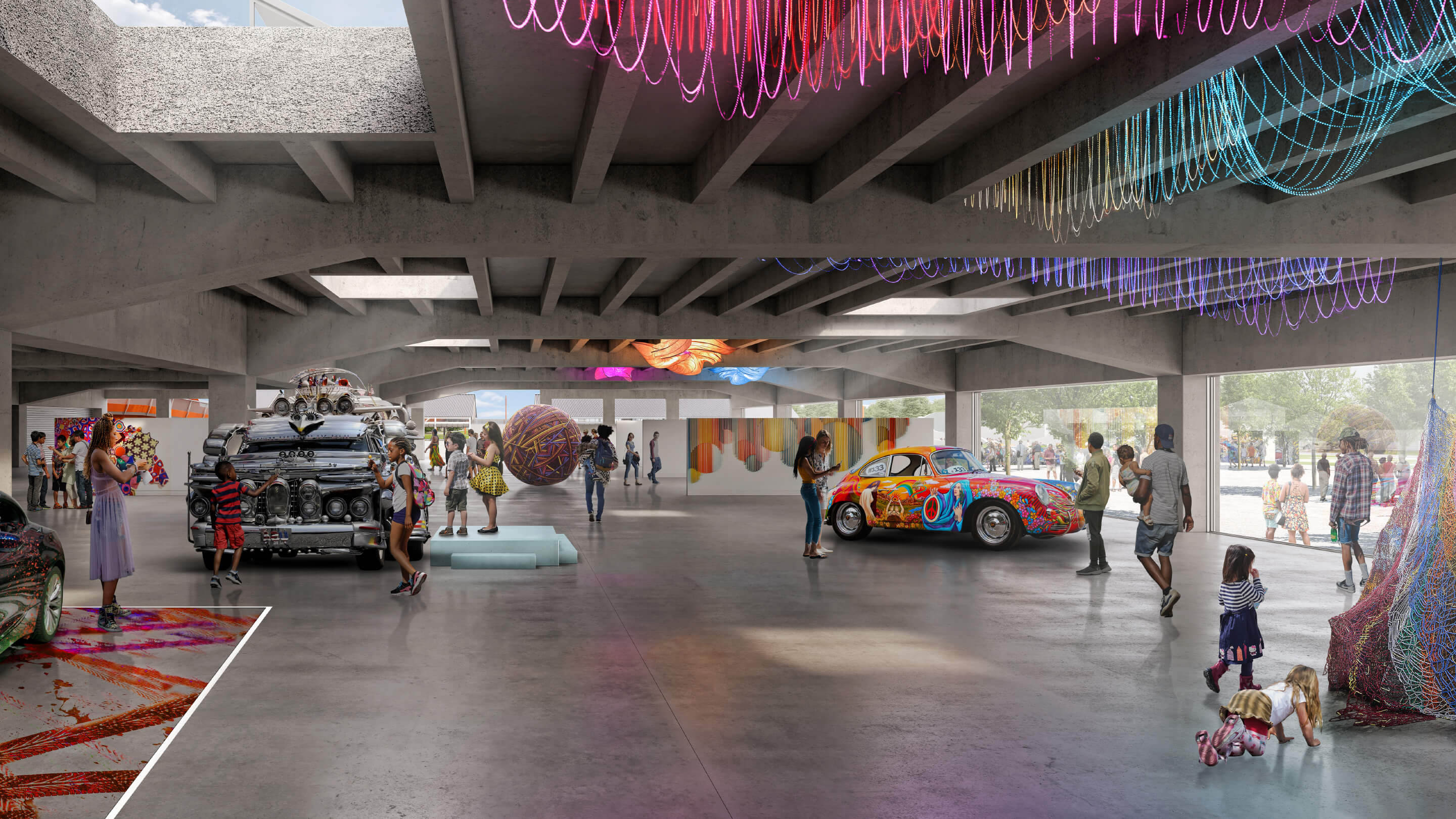
Rogers Partners’ master plan will restore and preserve the existing Orange Show Monument, while improving accessibility and integrating it into the neighboring shipping facility. This site is home to a 25,000-sq-ft concrete warehouse structure that will be cleaned up, but left raw, and enclosed by garage doors that will allow it to be either closed and air-conditioned or open. The space will be used for rotating exhibitions and flexible event space. An old administration building attached to the warehouse will be demolished and replaced by a new building, called the Head House. An 800-foot-long ramp will connect the ground level to the penthouse of the upper level of this structure, a space for the display of Art Cars as well as a promenade for people to strut their stuff.
To support OSCVA’s community engagement mission, an existing metal shed building will be transformed as classroom space, and a new but similar metal building, called the Garage, will be added as a workshop. “The Orange Show has been developing collaborative programs with Houston Independent School District, Houston Community College, University of Houston to serve those places that don’t have robust access to educational programs,” said Rob Rogers, principal of Rogers Partners.

The firm is also designing the landscape, which includes an area adjacent to the parking lot called the Grove, which will serve as expandable parking as well as space for food trucks, the outdoor exhibition of art cars, and hosting markets. Next to Smithers Park there will be a second set of sculpted mosaic walls, an allée of trees, and tables and chairs. The large open space at the center of the site, called the Lot, will host music festivals, arts festivals, and large markets.
Last but not least, OSCVA negotiated a connection to neighboring Fonde Park, which will add 9 acres of green space to the destination, as well as a link to Brays Bayou and the Houston Bayou Greenways network, a superhighway of hike and bike trails that connects to the whole city.







